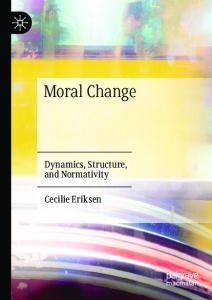Archives as sediments: metaphors of deposition and archival thinking
- PDF / 676,841 Bytes
- 13 Pages / 439.37 x 666.142 pts Page_size
- 39 Downloads / 471 Views
Archives as sediments: metaphors of deposition and archival thinking Juan Ilerbaig1
© Springer Nature B.V. 2020
Abstract In their Manual for the Arrangement and Description of Archives, Muller, Feith, and Fruin compared the accumulation of archival materials with the geological process of deposit of sedimentary materials. This metaphor remained embedded in the European archival traditions and has continued to be discussed until the present, for instance, in the Italian archival literature. This paper explores, from a historical perspective, how and why this metaphor was adopted during the foundational period of modern archival science. The paper analyzes the links between geology and archival science as enterprises involved with historical reconstruction. The paper argues that as palaetiological disciplines, both shared a concern with issues of evidence in the study of individual, historically formed entities. Viewing the formation of archives as parallel to the deposition of sediments provided archival scholars at the turn of the twentieth century with a way of conceptualizing archival thinking as positive scientific knowledge of an essentially individual entity: the archives. This metaphor aligned archival science along with other historical sciences that could boast a measure of reputation and success. The metaphor also matched perfectly the modernist regime of historicity characteristic of the foundational period and culture of the modern archival discipline. Keywords Archival metaphors · Archival sedimentation · Archival thinking · History of archival theory In their Manual for the Arrangement and Description of Archives, Muller et al. (1940, p. 19) argued that record making and record keeping are natural and organic processes. They resorted to various metaphors to make their case. In some passages, they compared the accumulation of archival materials to the geological process of deposit of sedimentary residues. In others, they claimed that archives resembled * Juan Ilerbaig [email protected] 1
Institute for the History and Philosophy of Science and Technology, University of Toronto, Toronto, Canada
13
Vol.:(0123456789)
Archival Science
organisms, making the task or archival reconstruction similar to the work of the paleontologists who put back together the fossilized skeletal remains of extinct animals (see Ilerbaig 2016). These metaphors were complementary. Whereas the view of archives as organisms embodied a metaphorical exploration of their organization, the comparison of archival materials to sedimentary deposits sought to depict as natural their mode of growth. The Dutch trio defined an archives in the first rule of the Manual, and in the second rule, they restated that definition along geological lines, claiming that an archives is “always a sediment of the functions of [an organizational] body or of [an] official.” For the English-speaking public, however, this metaphor was erased in Arthur Leavitt’s translation of the Manual into English. As Horsman et al. (2003, p. 261) have
Data Loading...











